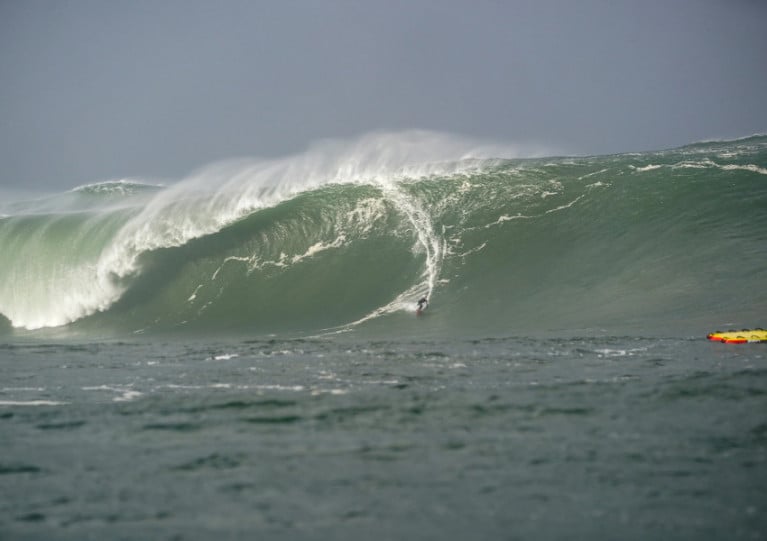Displaying items by tag: Hurricane Epsilon
Conor Maguire Rides ‘Ireland’s Biggest Wave’ at Mullaghmore Head
It was an opportunity too big to miss: the biggest waves ever seen at a spot already renowned for significant swells.
But big wave surfer Conor Maguire wasn’t taking any chances, making sure to consult with the proper authorities before heading out to ride what might be the biggest wave recorded at Mullaghmore Head.
As previously reported on Afloat.ie, the remnants of Hurricane Epsilon in the Atlantic brought ‘phenomenal’ class seas and waves up to 21 metres — more than double the typical height for the area — to the North West Coast earlier this week.
That would normally be a screaming alarm for surfers the world over to make the dash to Sligo, but continuing Covid-19 travel restrictions meant this time the ‘mutant’ surf was strictly for the locals.
And even at that, as the Guardian reports, veteran surfer Maguire needed to make sure he wasn’t stepping on any toes by heading out into the big blue on Wednesday 28 October.
He told surfing website Magic Seaweed: “We contacted Sligo County Council and got permission to surf, spoke to the coastguard.
“We had four skis and a paramedic on hand; two spotters on the cliff. We couldn’t have been any more safe, and [it was] the perfect time to take a good crack at it.”
Magic Seaweed has more in its exclusive interview with Conor Maguire, who also shared his story with Red Bull.























